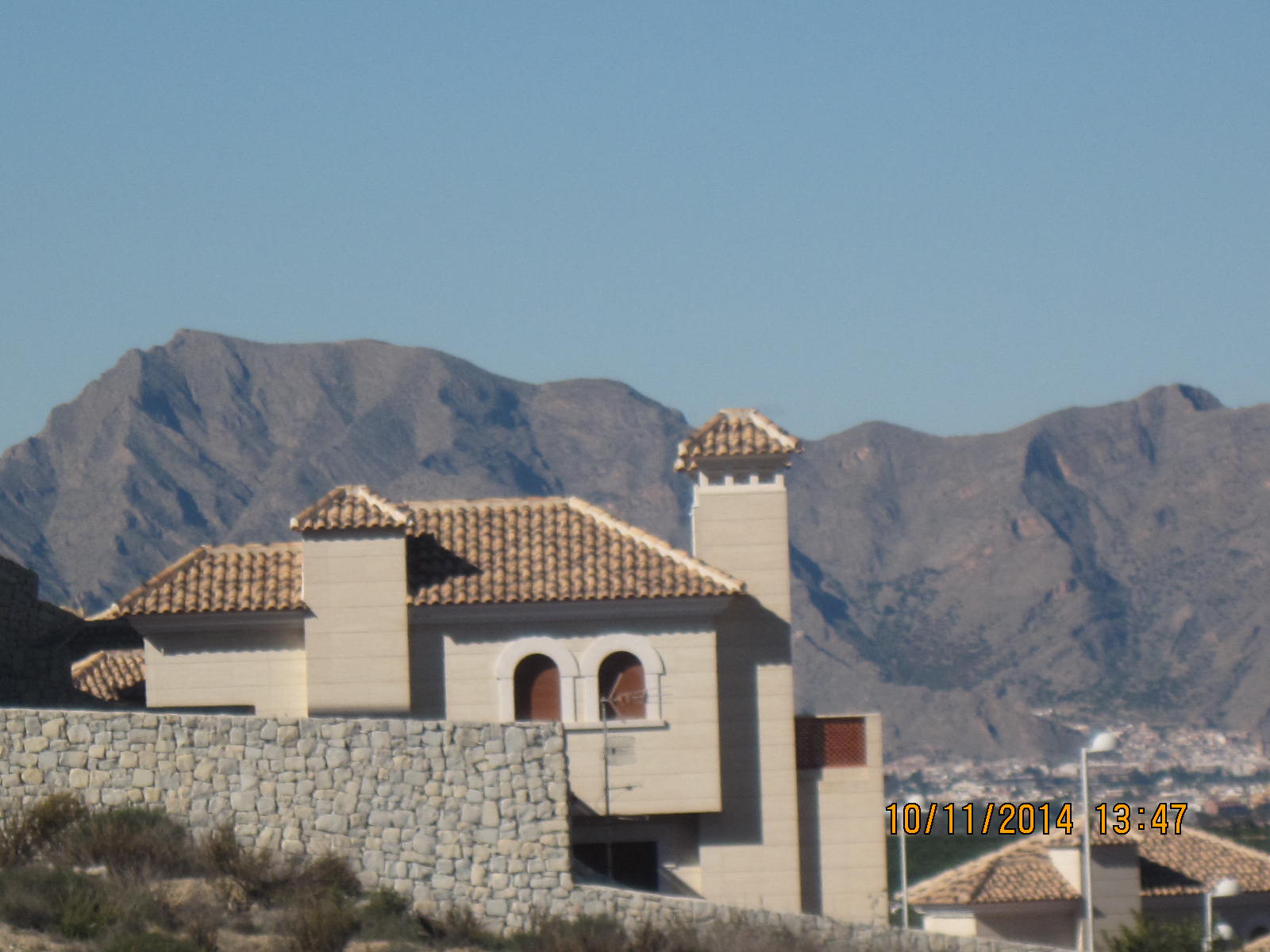 Just after 7.00 am on Sunday, I felt the earth move for the first time in quite a while. Sorry to disappoint my more salacious readers, but Tony hadn't been at the little blue pills again - he's saving those for his birthday. But I digress. What sounded like a big truck went rumbling past, and woke Paddy. However, it can't have been a truck, because our friends on the other side of La Finca heard it at the same time. Nor was it the intruder Paddy obviously thought it was as he raced around the doors. The 'big truck' was an earthquake at 3.2 on the Richter scale, which wasn't enough to cause damage to the apartment or its contents but was strong enough to rattle the patio doors and the front door.
Just after 7.00 am on Sunday, I felt the earth move for the first time in quite a while. Sorry to disappoint my more salacious readers, but Tony hadn't been at the little blue pills again - he's saving those for his birthday. But I digress. What sounded like a big truck went rumbling past, and woke Paddy. However, it can't have been a truck, because our friends on the other side of La Finca heard it at the same time. Nor was it the intruder Paddy obviously thought it was as he raced around the doors. The 'big truck' was an earthquake at 3.2 on the Richter scale, which wasn't enough to cause damage to the apartment or its contents but was strong enough to rattle the patio doors and the front door.
The epicentre of the earthquake was in Los Montesinos, about 5 kilometers away, and there was another, milder tremor a few minutes later.According to the Euro-Mediterranean Seismology Centre, it covered an area of 15 kilometres. So, why did Sunday's earthquake happen? Because the southern Iberian peninsula is on a fault line between two tectonic plates - the Eurasian and the African plates. The areas most at risk of earthquakes include Almeria and Murcia, both of which are close neighbours of Alicante province, where Algorfa is located. There's more information in this article.
There have been several earthquakes in Algorfa since we moved here in 2008. There were minor terremotos (earthquakes in Spanish) in early March and late May, registering 3.3 and 2.9 respectively. The one that caused most reaction and disruption, in August of that year, happened around half an hour after midnight. Because there were warnings of more severe seismic activity to come, the people in Algorfa were evacuated into the village square. If an earthquake hits, you're safer in the open air than in a building that might fold in on you like a pack of cards, unless the building has been constructed with the possibility of earthquakes in mind. That does happen these days, but a number of properties in the centre of Algorfa are older and more basic. The August 2008 earthquake was 3.4 magnitude, and there were a number of aftershocks. Again, the epicentre was Los Montesinos.
In February 2012, there was a 3.0 magnitude earthquake in the area, and in June 2013 there was a 2.7 quake centred in the Rojales region. June 2014 saw a 1.3 quake, which would not normally be felt. However, people in Villamartin were wakened by it. But what do all these numbers mean in terms of feeling the earth move and damage to structures and possessions? Well, the ones we feel in Algorfa count as minor earthquakes, according to this summary. That means it's noticeable, but rarely causes damage, though there may be some rattling of indoor objects. Not so bad then, although it can be scary, especially if you're woken in the middle of the night.
The worst earthquake in Spain in recent memory is the one that happened in Lorca, Murcia in May 2011. It was a relatively mild 5.1 magnitude, but 9 people died, and there was extensive damage. The timing was crucial - it was a little before 7 pm when people were making there way home - and investigations since suggest that groundwater extraction over a prolonged period may have triggered the incident.
However, Spain's worst earthquake in the last 600 years was in 1829 in Torrevieja. More than 400 people died - 192 in Almoradi alone - and 3000 properties across the region were damaged or destroyed. The quake registered around 6.6 - 6.9 at its most violent - and the effects were felt across the region, with Almoradi, Benejuzar, Rafal, Formentera, Rojales, Torrevieja, La Mata, Orihuela and Guardamar de Segura being pretty much razed to the ground.
Seismologists say Spain is due for another major earthquake, the last severe one being on Christmas Day 1884 at Arenas Del Ray, Andalusia, when 800 people died in the 6.5 incident. They tend to happen around every 70 - 80 years, so we're overdue. That's a comforting thought, isn't it?
If you enjoyed reading this, check out my website Sandra In Spain